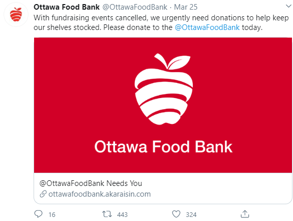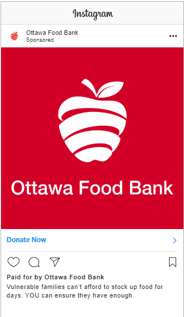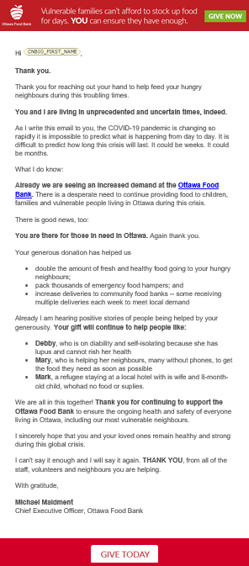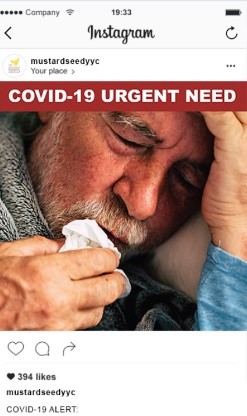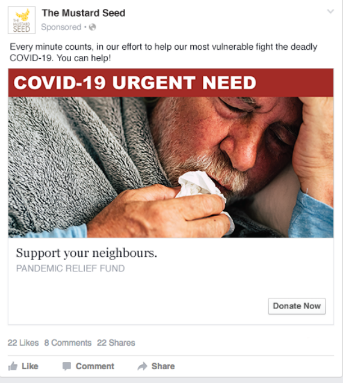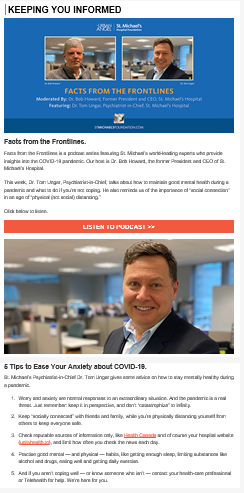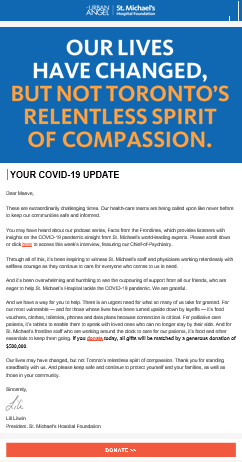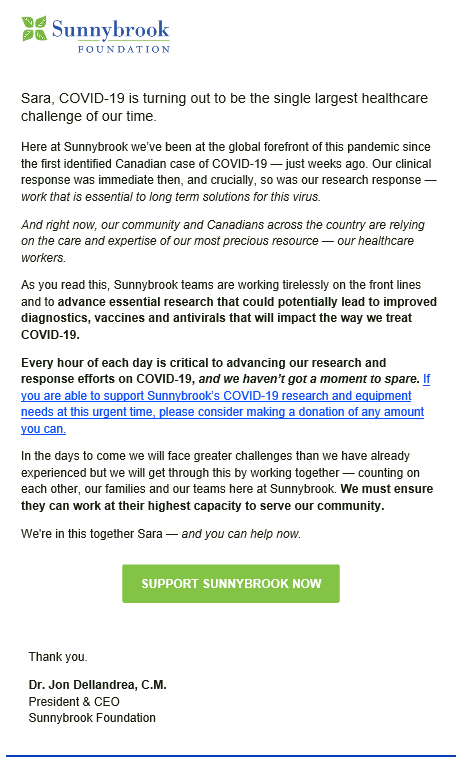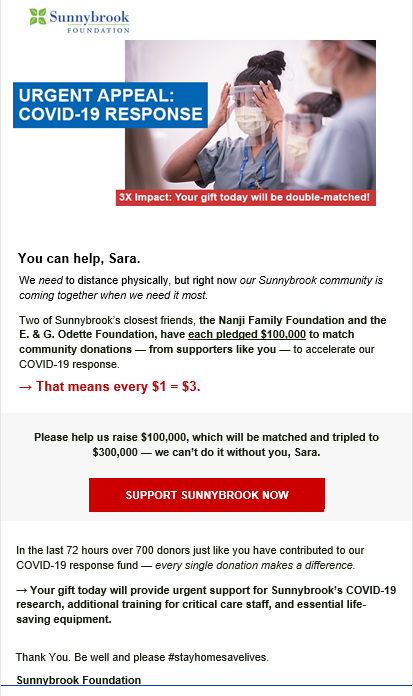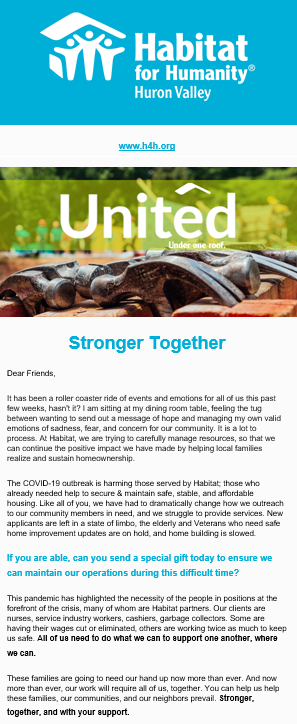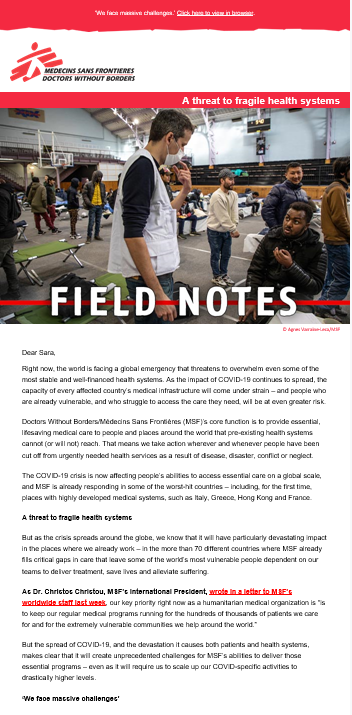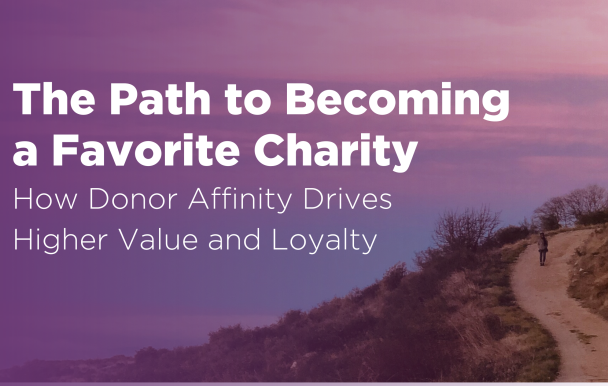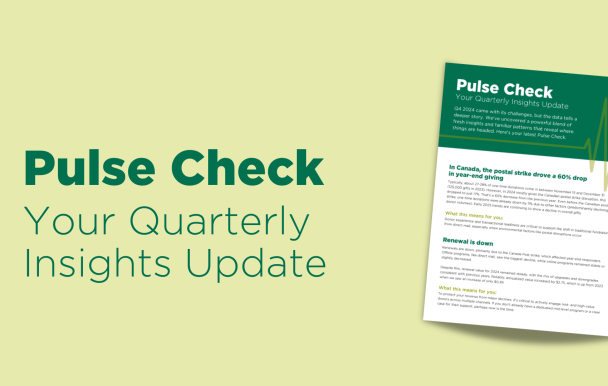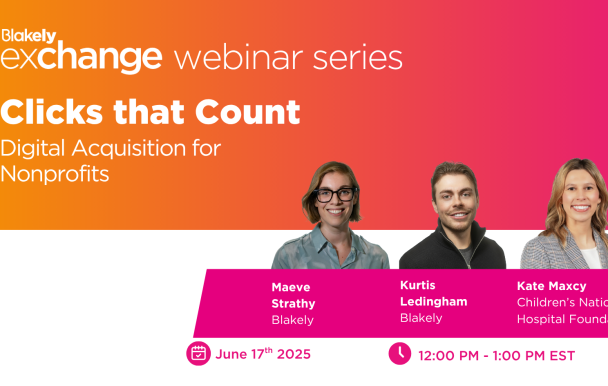Good News from The Fundraising Front Lines
Following along with the news day to day can be overwhelming for most of us, but there are some great ‘good news’ stories happening within our fundraising community, and we want to take a moment to highlight a number of them, and see what we can learn as we move through contingency fundraising and eventually into recovery.
First, it’s clear we need to be communicating with donors now more than ever. Organizations that are being transparent and vulnerable are connecting with donors in a very real way. Donors are responding to communications that make sense to them and are taking action when those communications resonate with them.
Donors, like everyone else, are feeling a sense of uncertainty, so it’s even more important that they be taken on the journey with you. They want to understand how the crisis is affecting your organization, what your plans are, and how they can help.
We’ve seen some great examples of organizations connecting with donors in an honest and transparent way during the initial weeks of this crisis.
Food banks and shelters are amongst those providing front line support during this crisis. Their asks should be easily explained and tangible enough for donors to see a direct correlation to their gift and the solution being provided.
A great example of this is what OFB has done. Their digital media buy on Facebook, Instagram, Google and Bing drove over $400,000 in donations with a media spend of just $15,000! They have also done an amazing job of integrating the messages across all channels, and actually saying “thank you” to their donors and community in this early stage of the crisis.
The Mustard Seed has also done a great job of engaging their community of supporters and raising thousands of dollars for front line support of vulnerable people.
Other front line providers include hospitals who are treating and diagnosing patients, trying to keep their staff safe, and working on a cure. There are so many ways they can connect with their donors, and we know how important hospitals are to their communities and supporters. Donors really want to hear what is being done and how they can help.
St. Michael’s Hospital Foundation is opening up to donors as the voice of the front line response on COVID. They are connecting with donors through the reality of the situation – here’s what is going on and here’s how you can help. And, donors are responding!
Sunnybrook Hospital is at the forefront of searching for a cure and the Foundation has created a designated COVID Response Fund to help donors direct their gifts to make an impact in the fight against COVID.
These front line organizations are being clear on the need and they are offering tangible solutions that donors can really buy into. They are doing more, not less, fundraising and they know that the more engagement they have with their communities now, the better they will be able to engage in the future.
But you don’t need to be on the front lines to connect with donors. We are seeing some amazing, successful appeals from organizations that do not have a direct relation to the COVID crisis, who are still out there doing amazing fundraising. There are appeals from all different types of organizations that have one thing in common …. they are being AUTHENTIC and TRANSPARENT with their donors. They are being VULNERABLE and REAL, and connecting from a VALUES PERSPECTIVE.
There are lots of different ways to do this, but we believe one key point is demonstrating your humanity. So, it’s fitting that Habitat for Humanity Canada wrote this wonderful appeal that starts off with this very human letter written from one person experiencing the crisis, to another. It’s not written from Habitat – the organization – it’s written from a ‘me to you’ perspective. It is a great example of building connections with your donors.
So, we recommend you do as much as you can, in a way that is authentic and honest, and you do it on as many channels as possible with as many great stories as possible.
Regardless of where you are in the crisis, one thing is clear – how you communicate now, will drive your connections with your donors and your stakeholders in the formal recovery stage.






